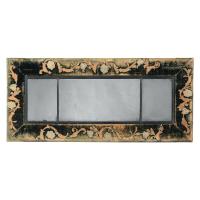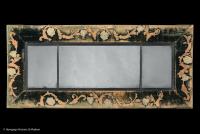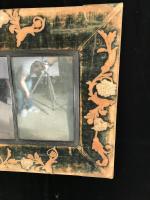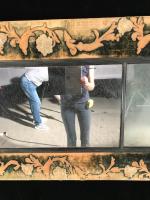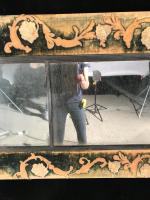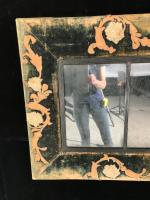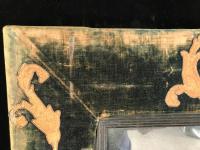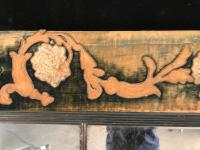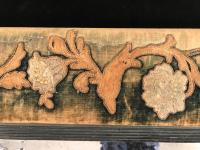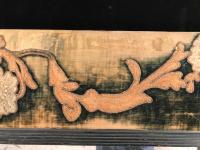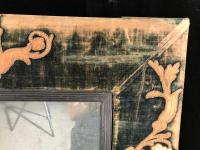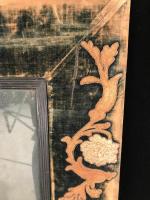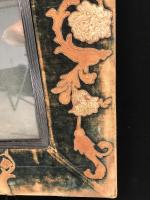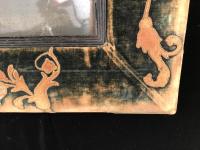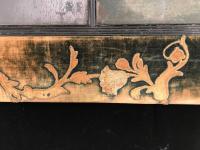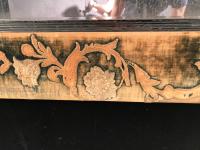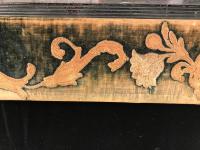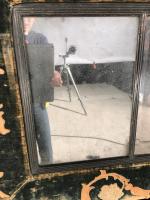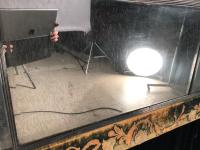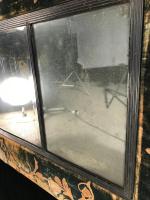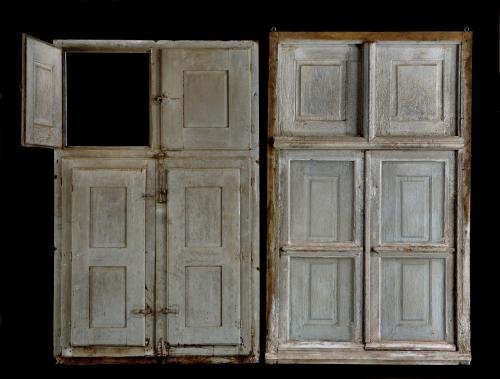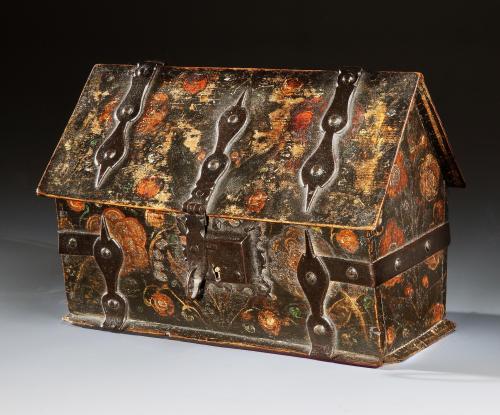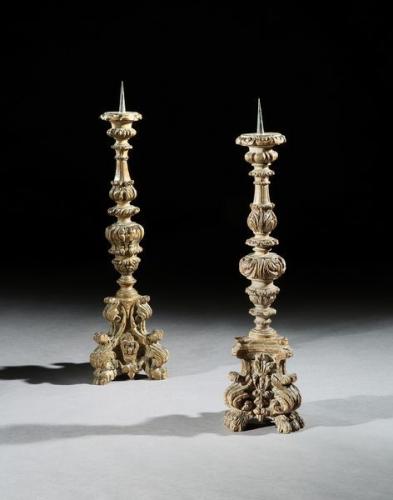
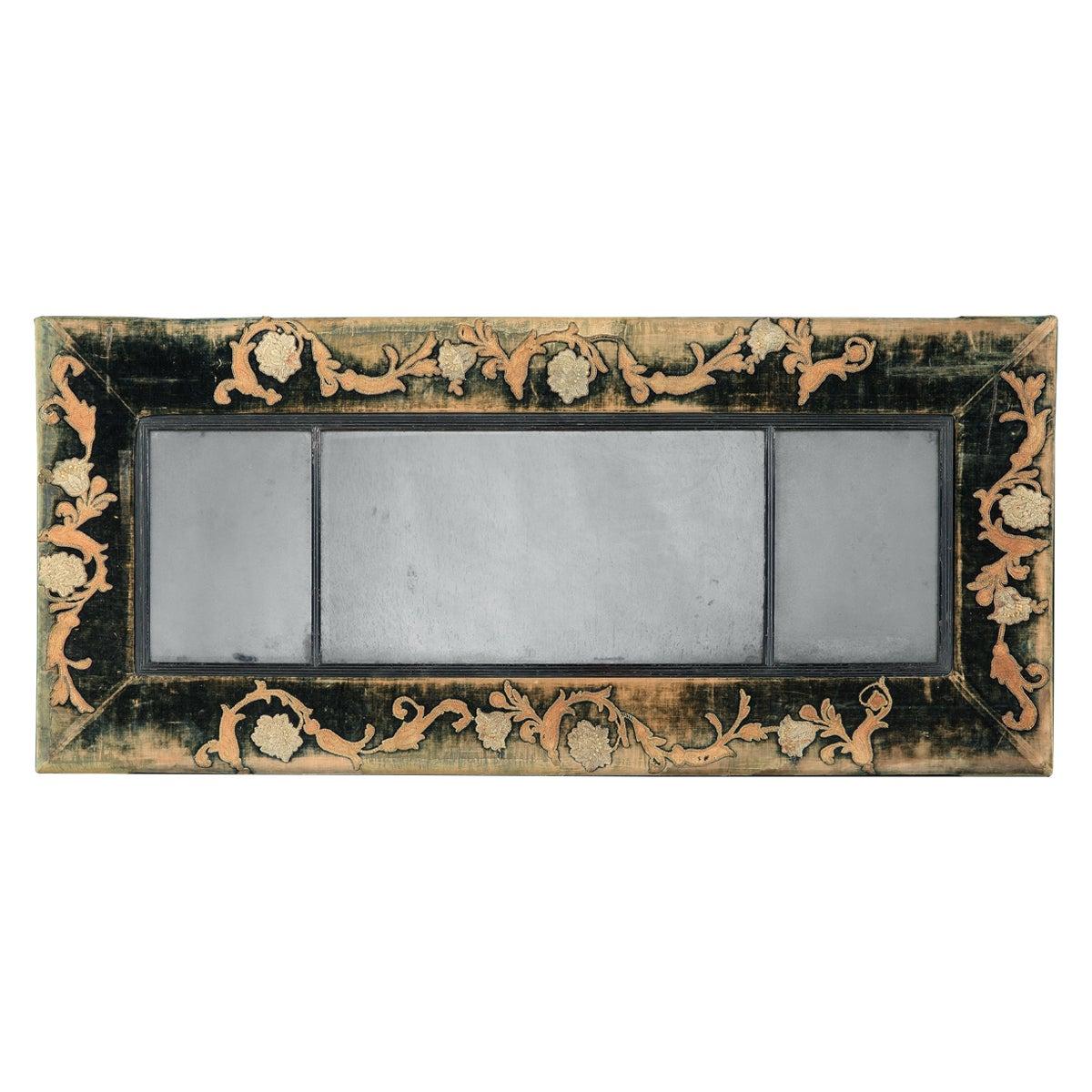
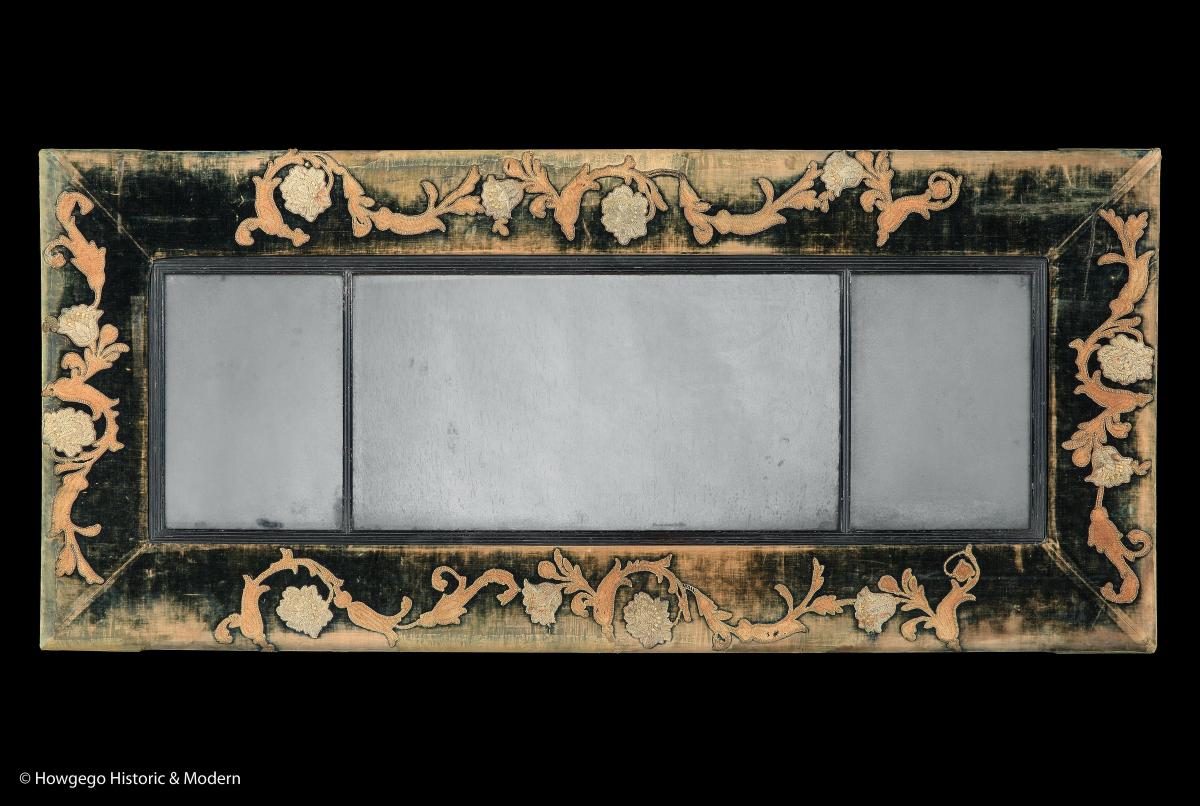
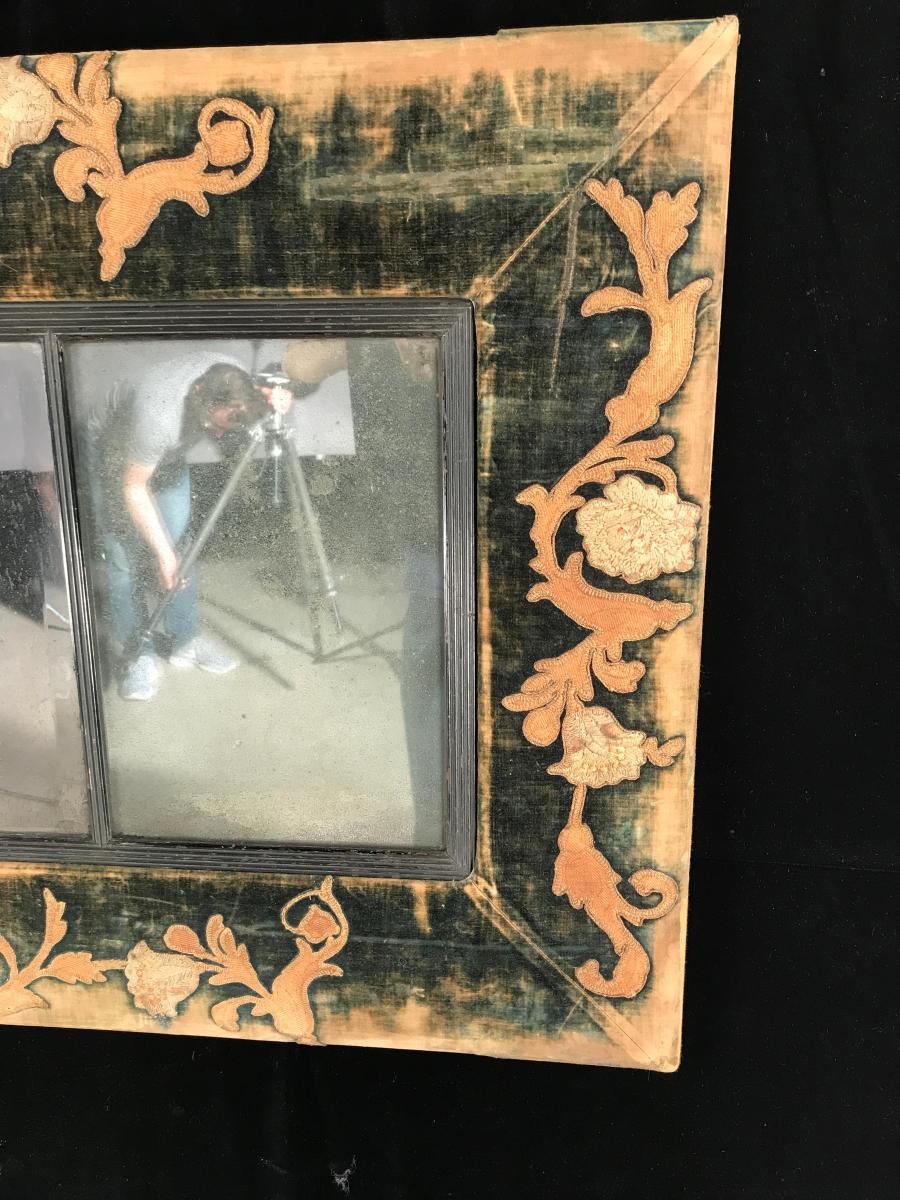
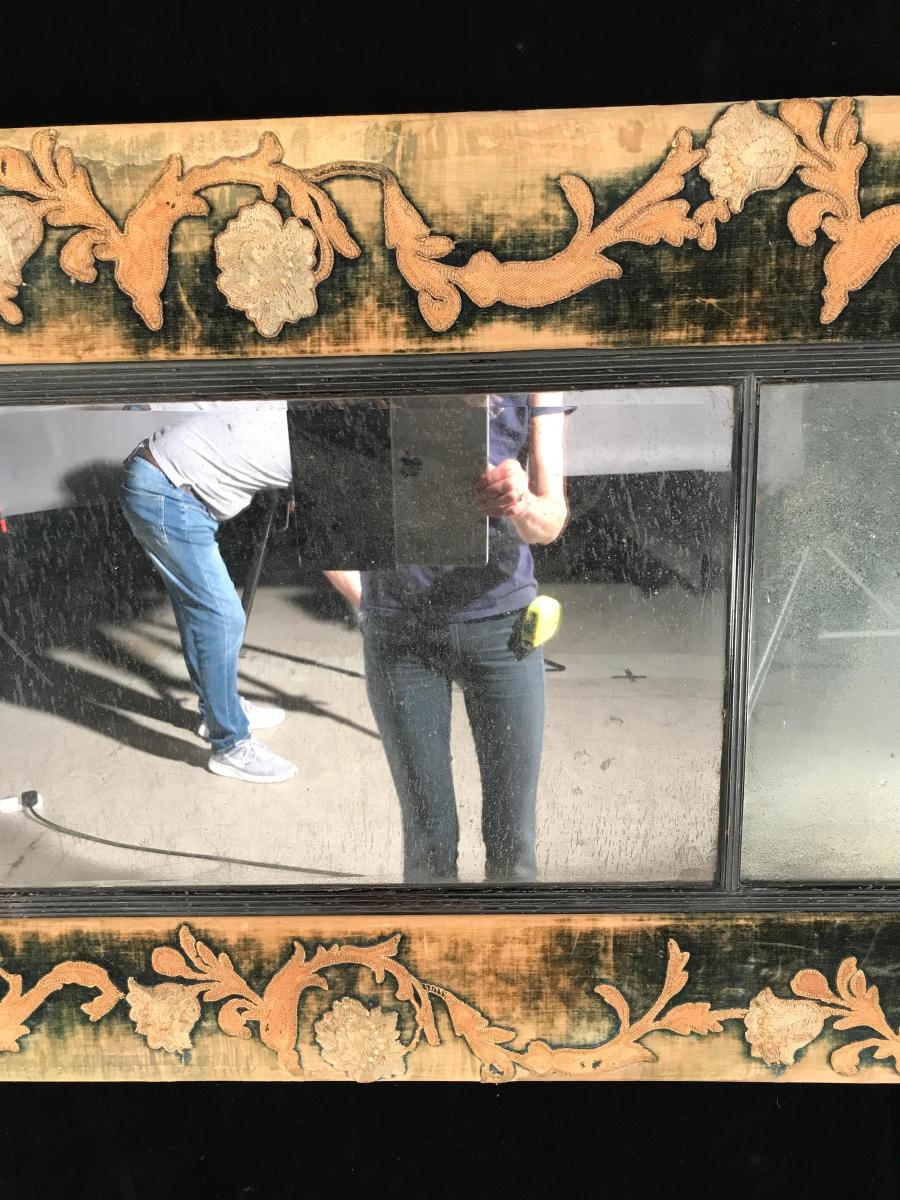
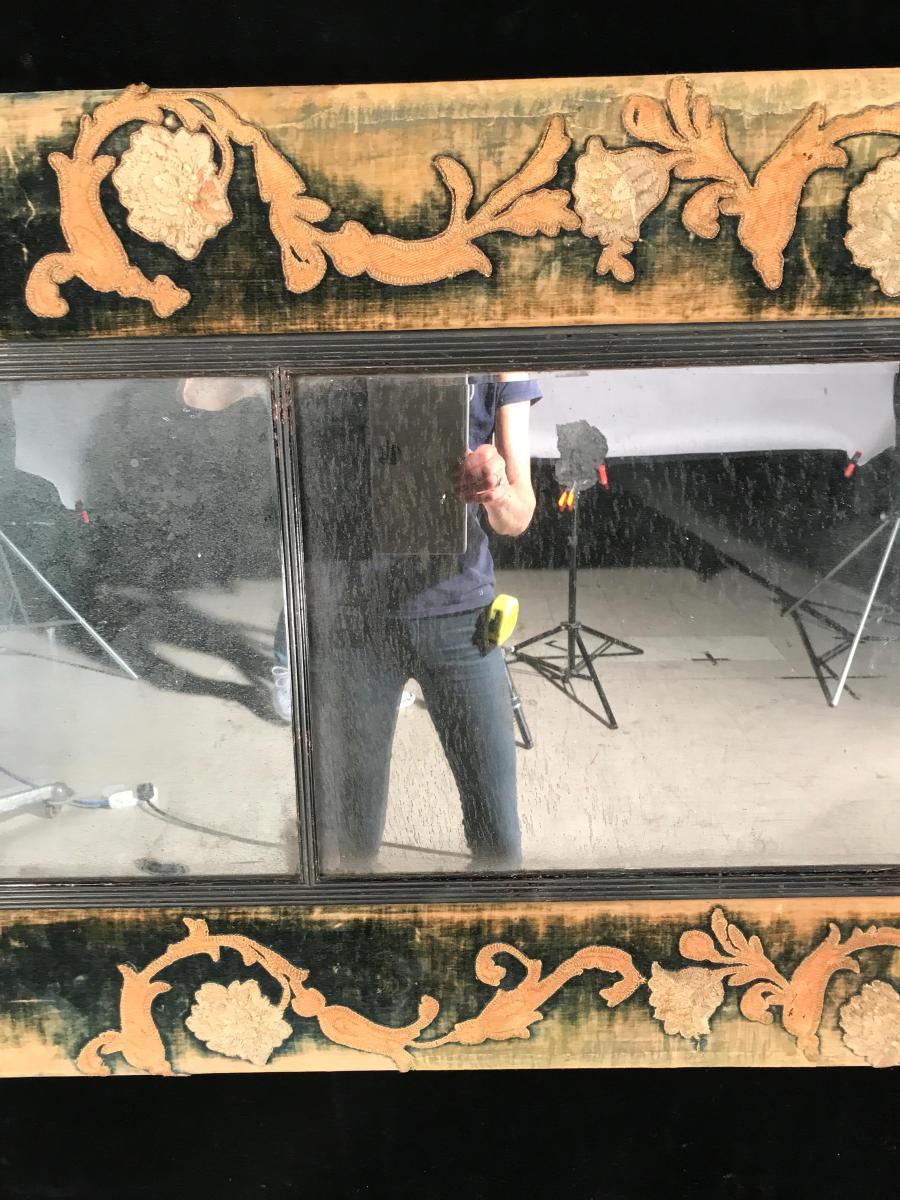
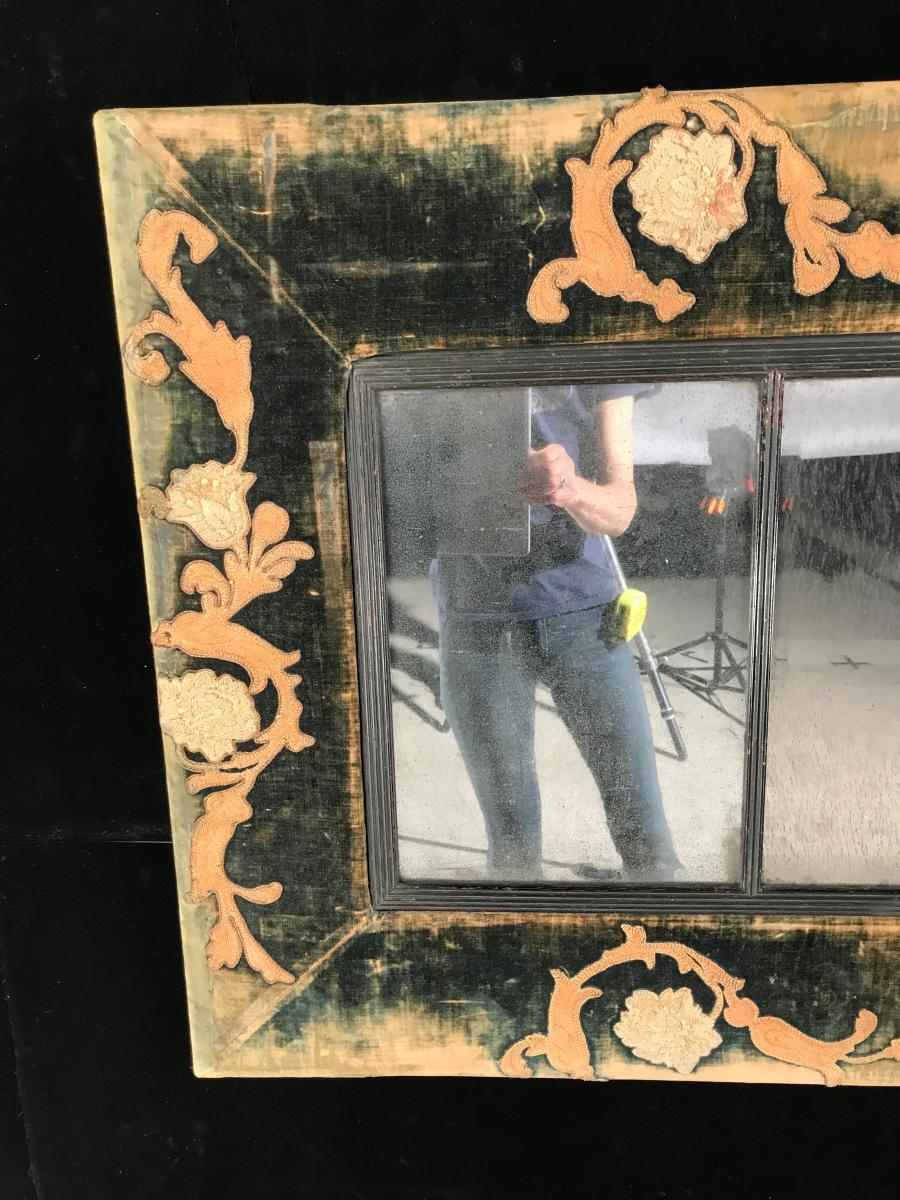
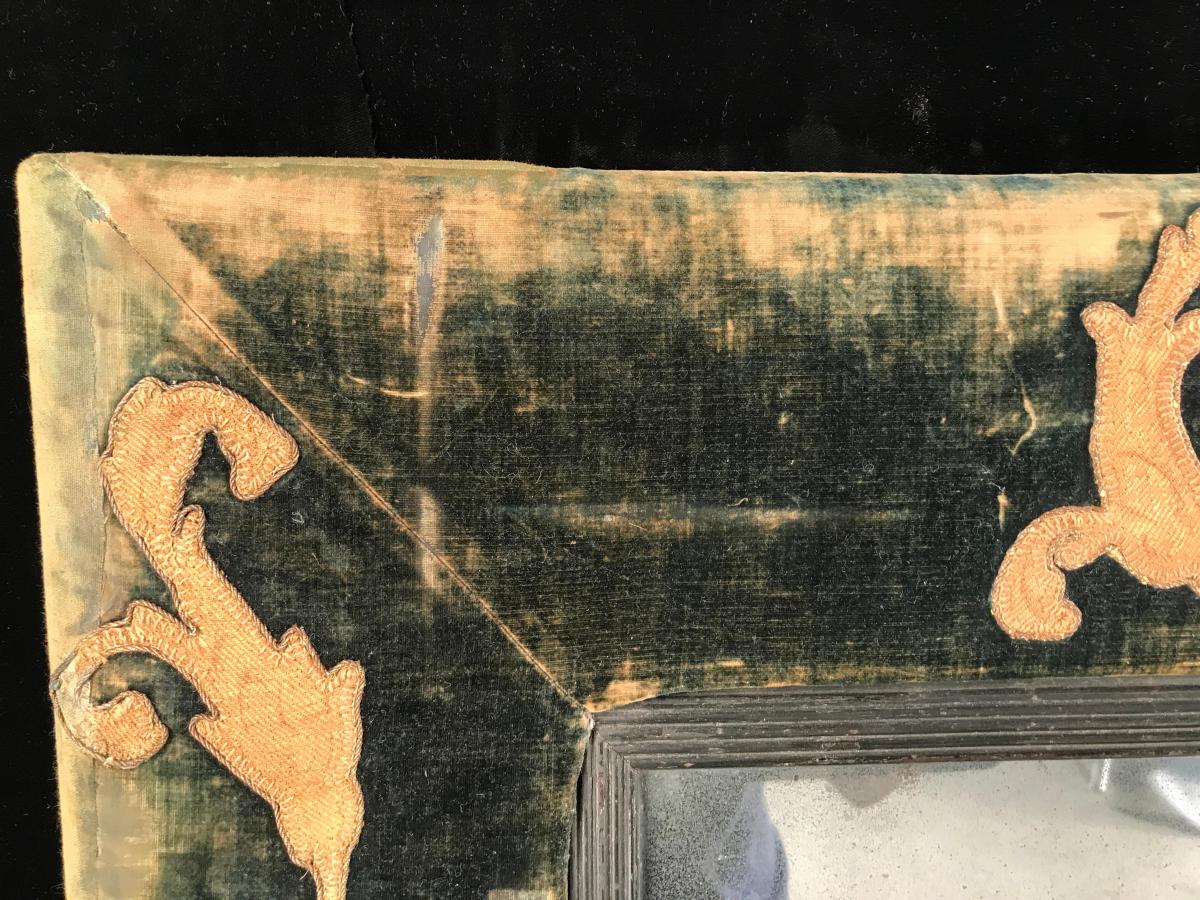
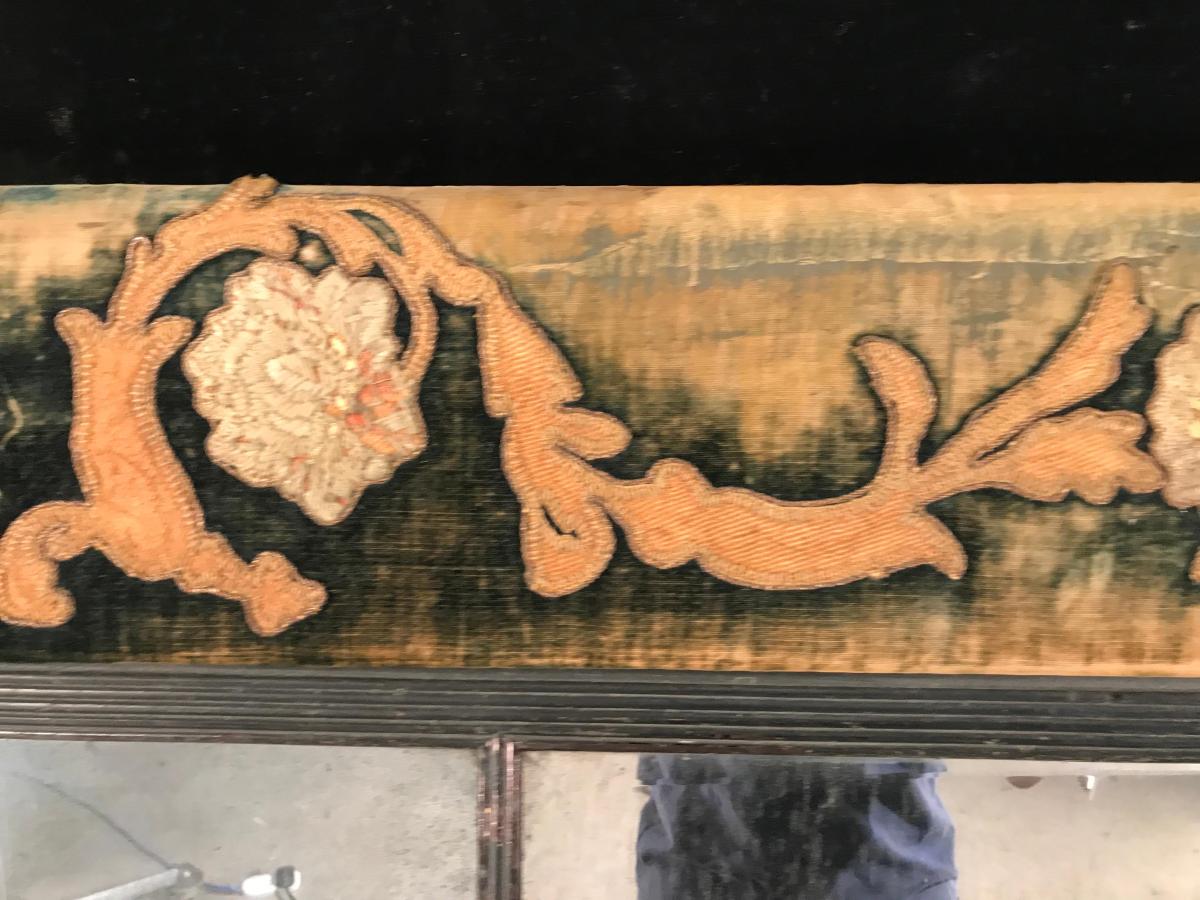
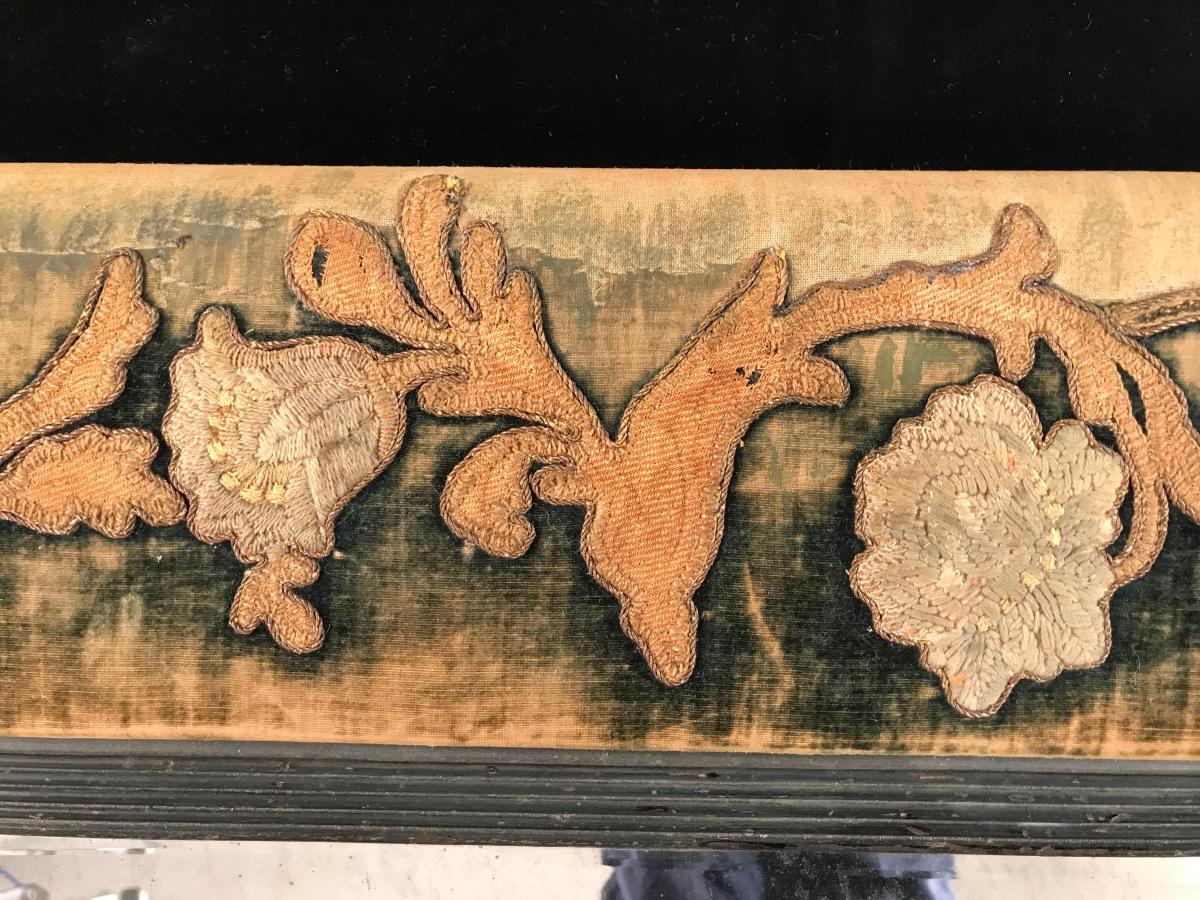
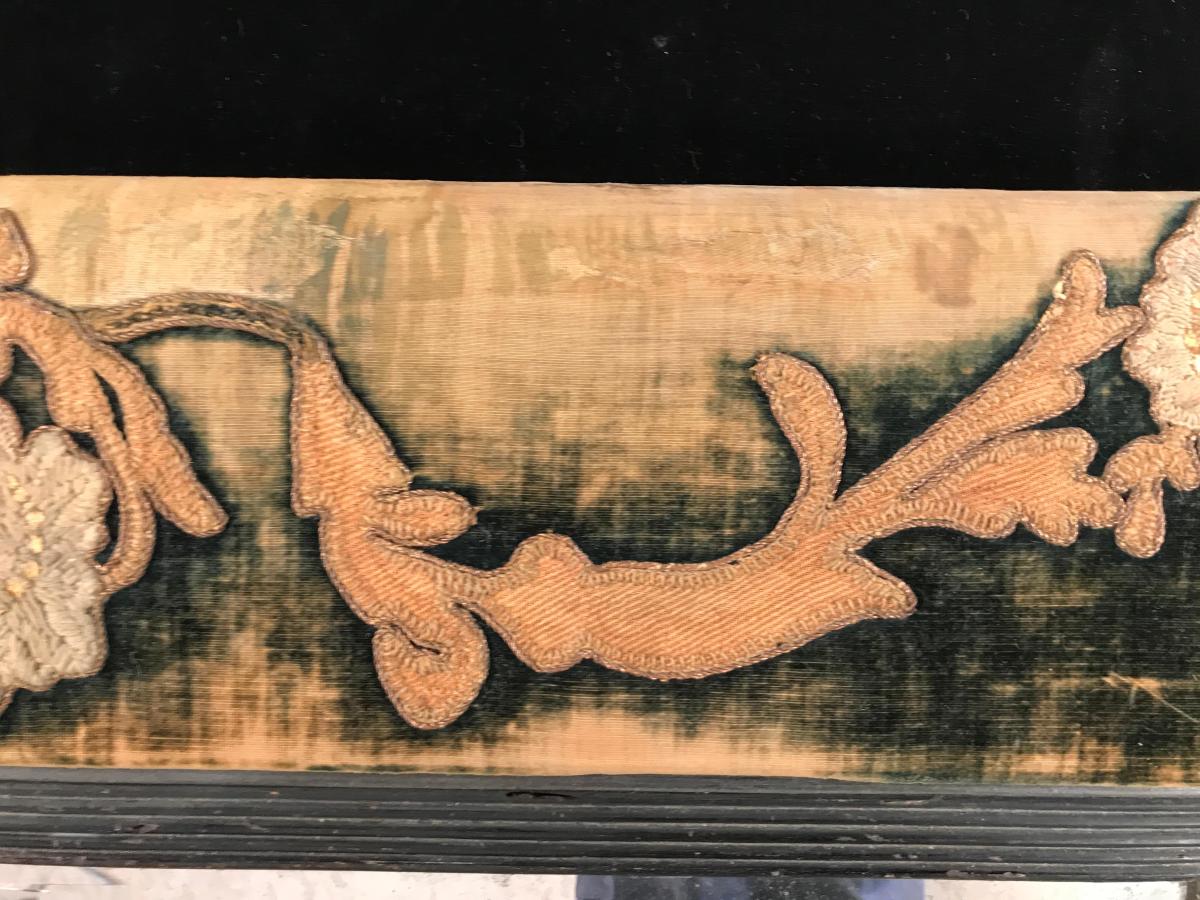
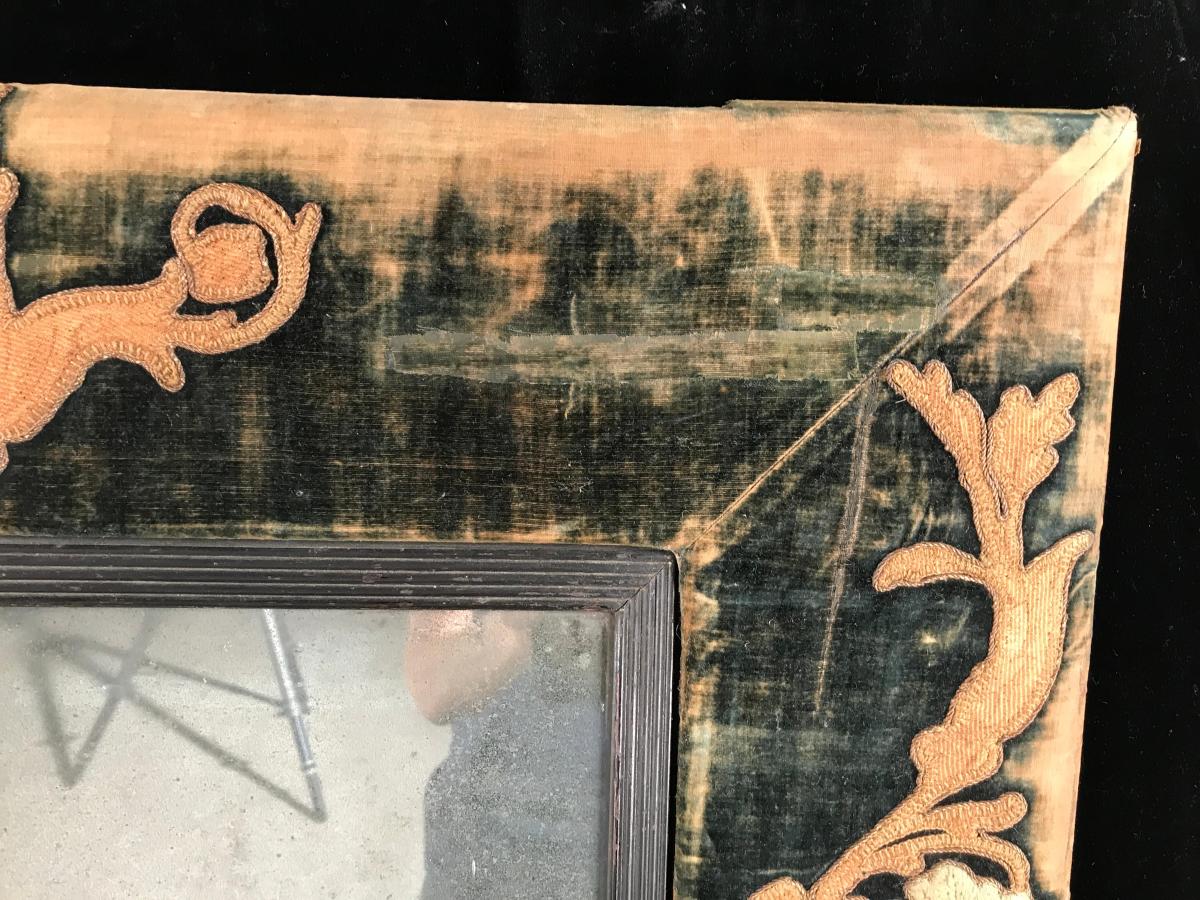
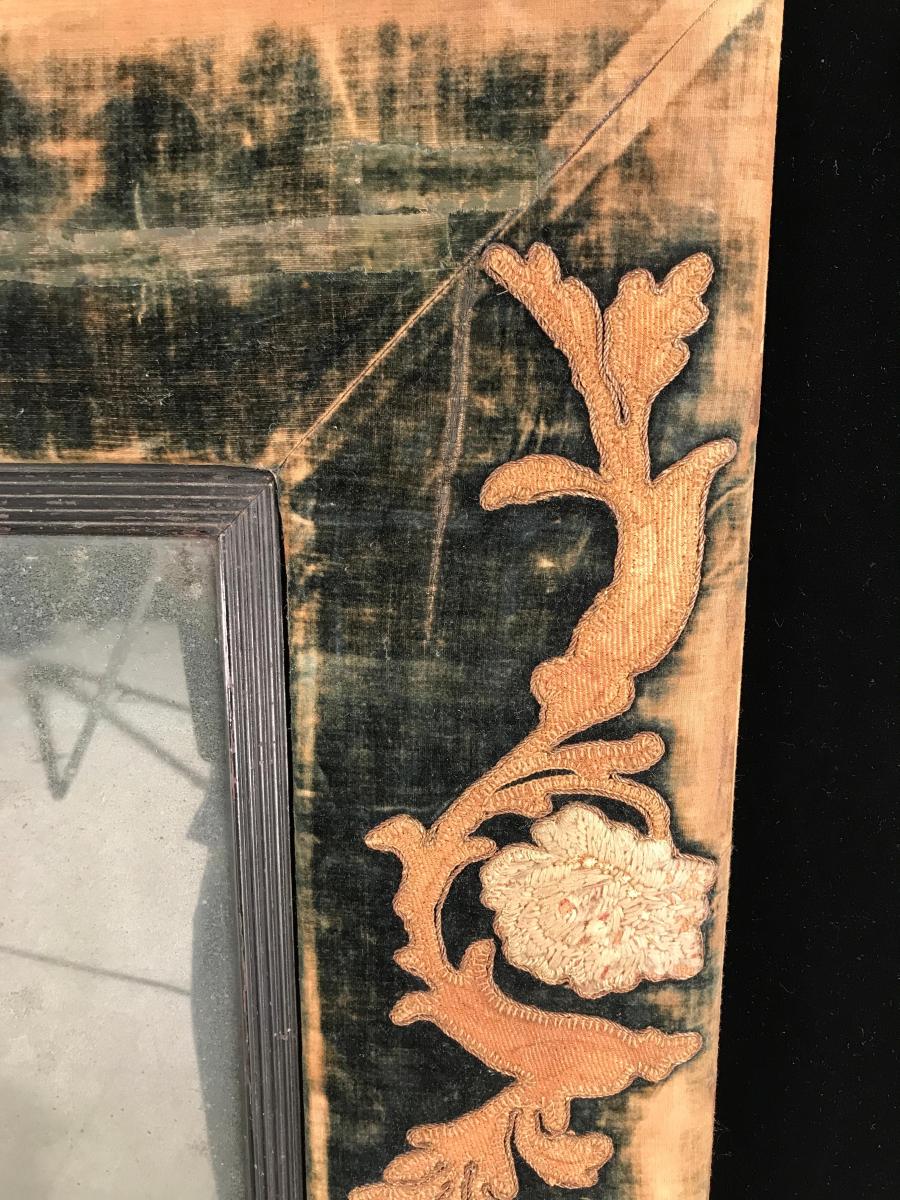
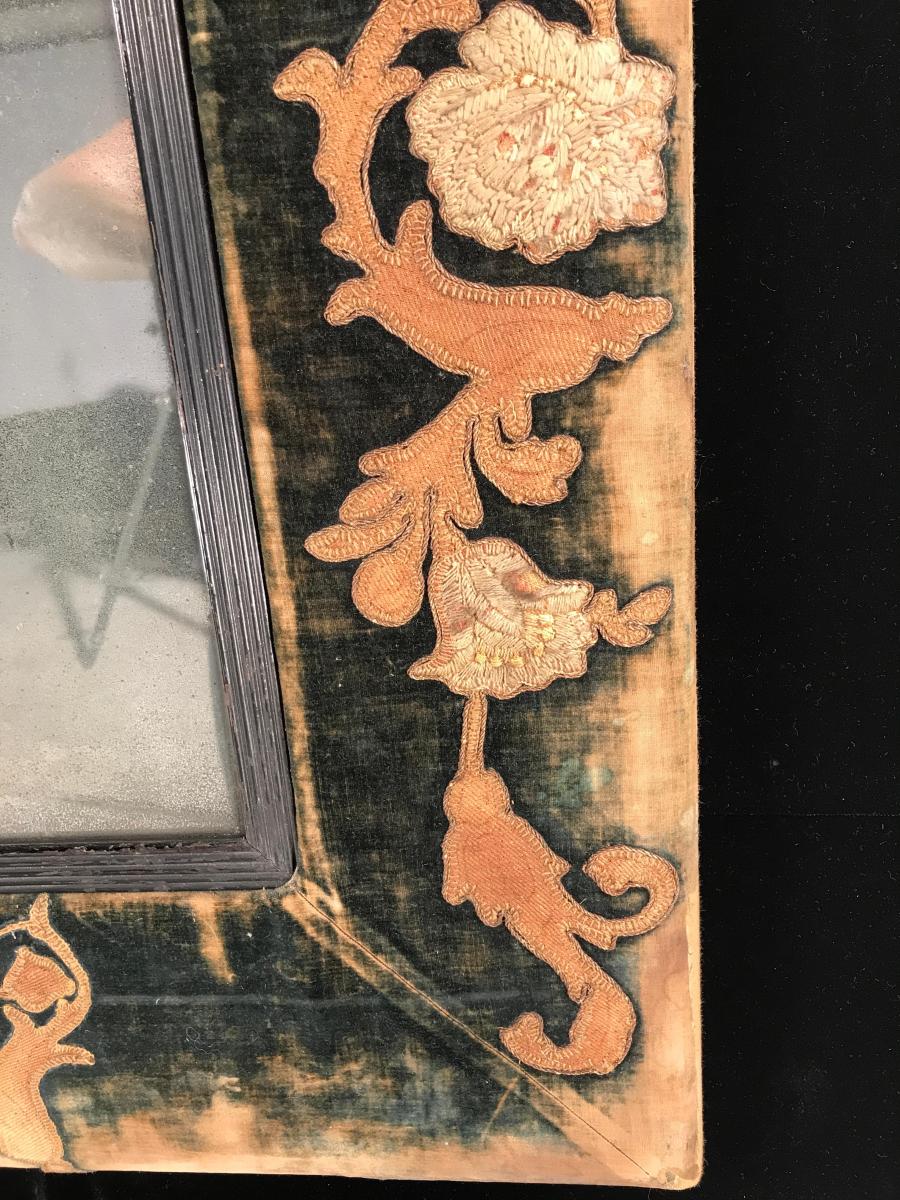
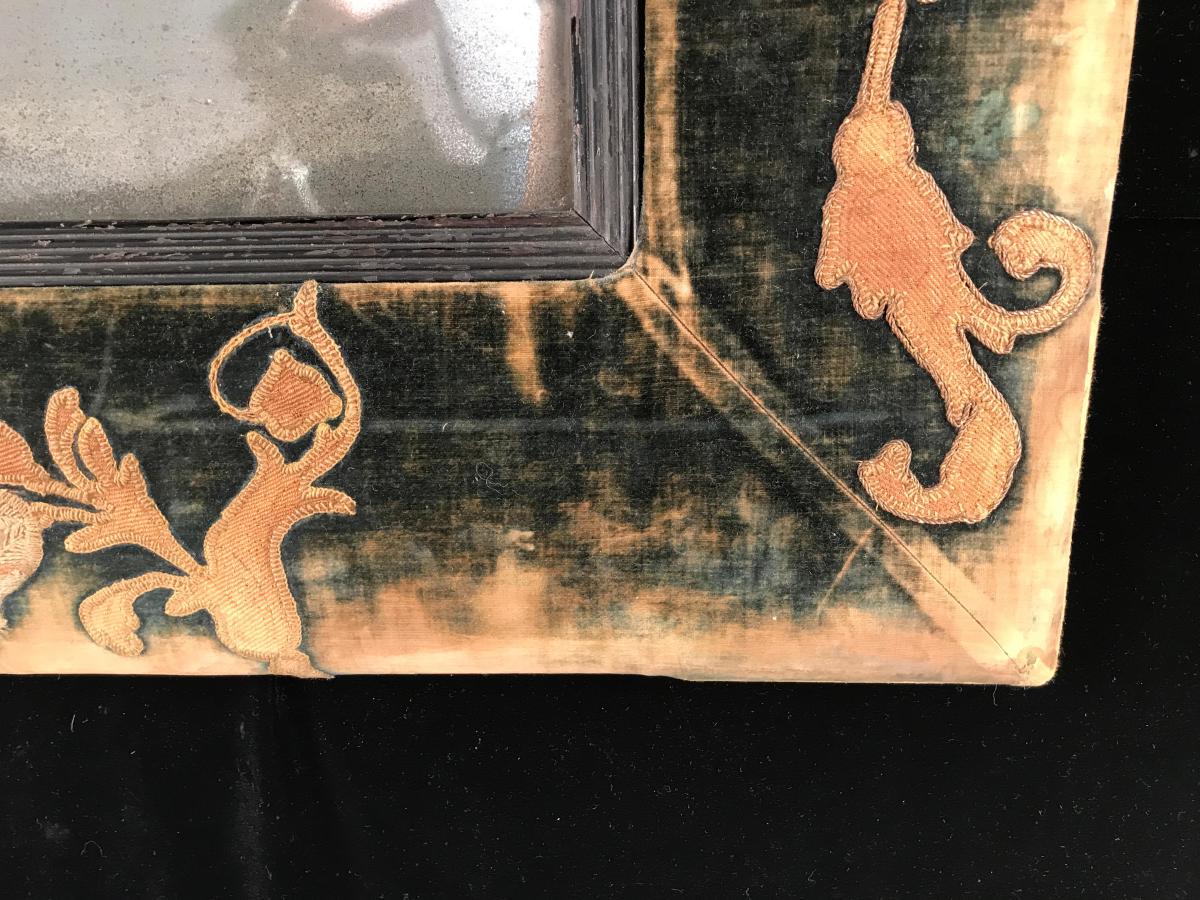
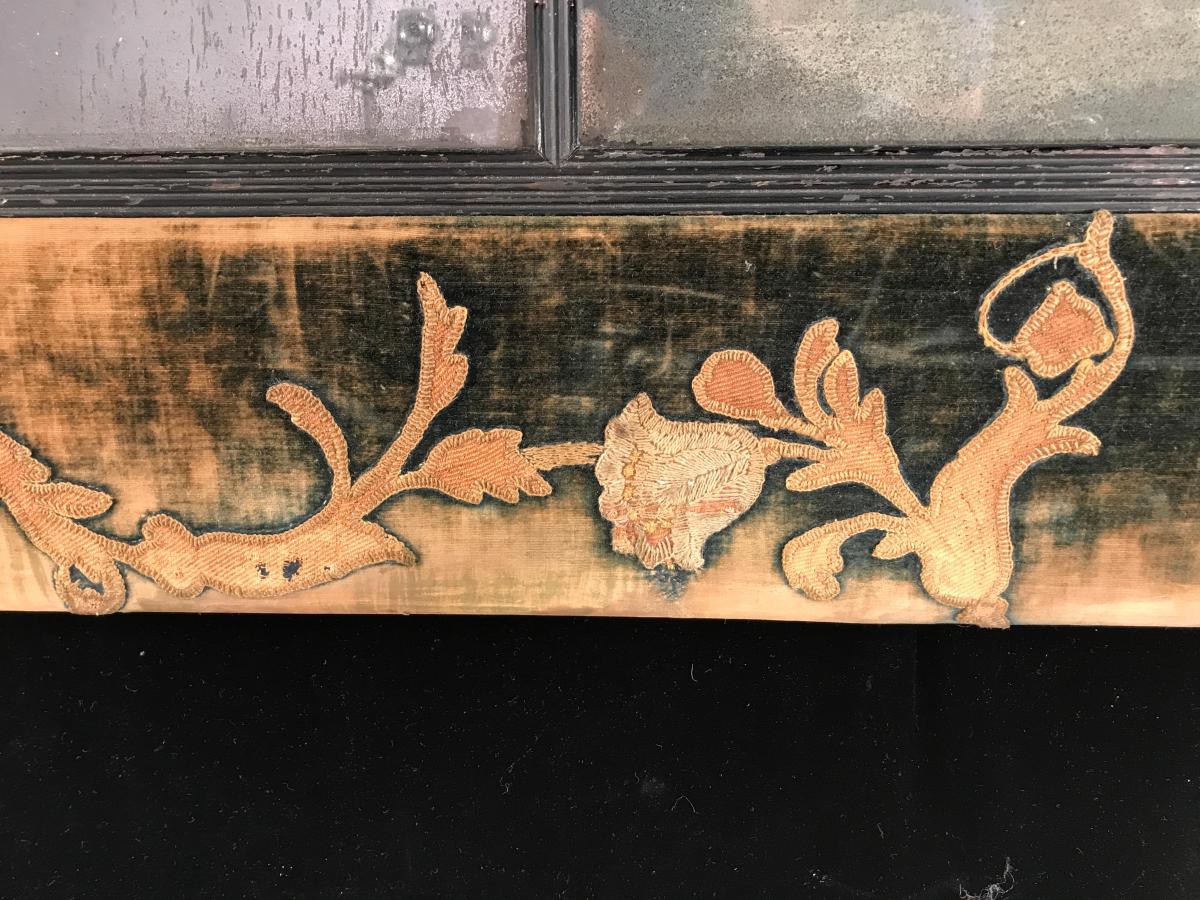
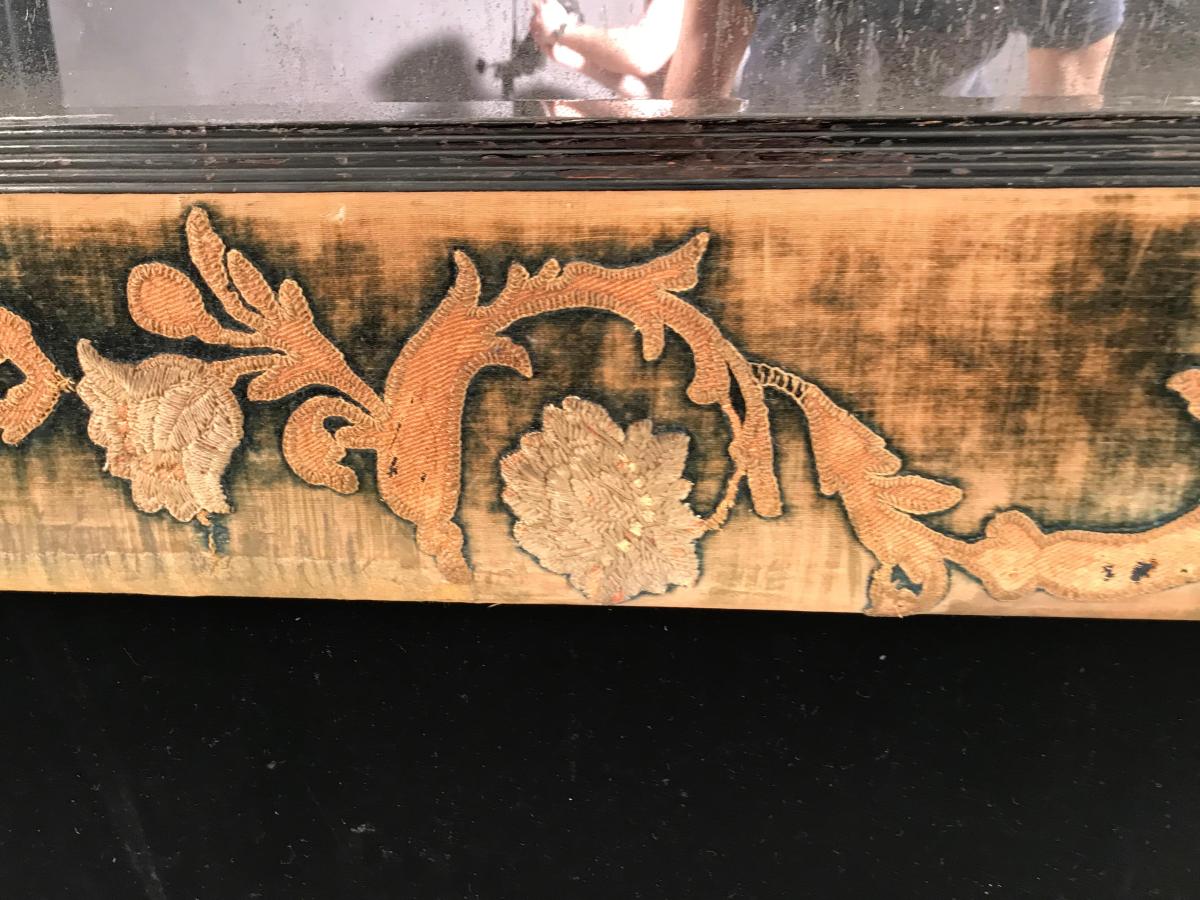
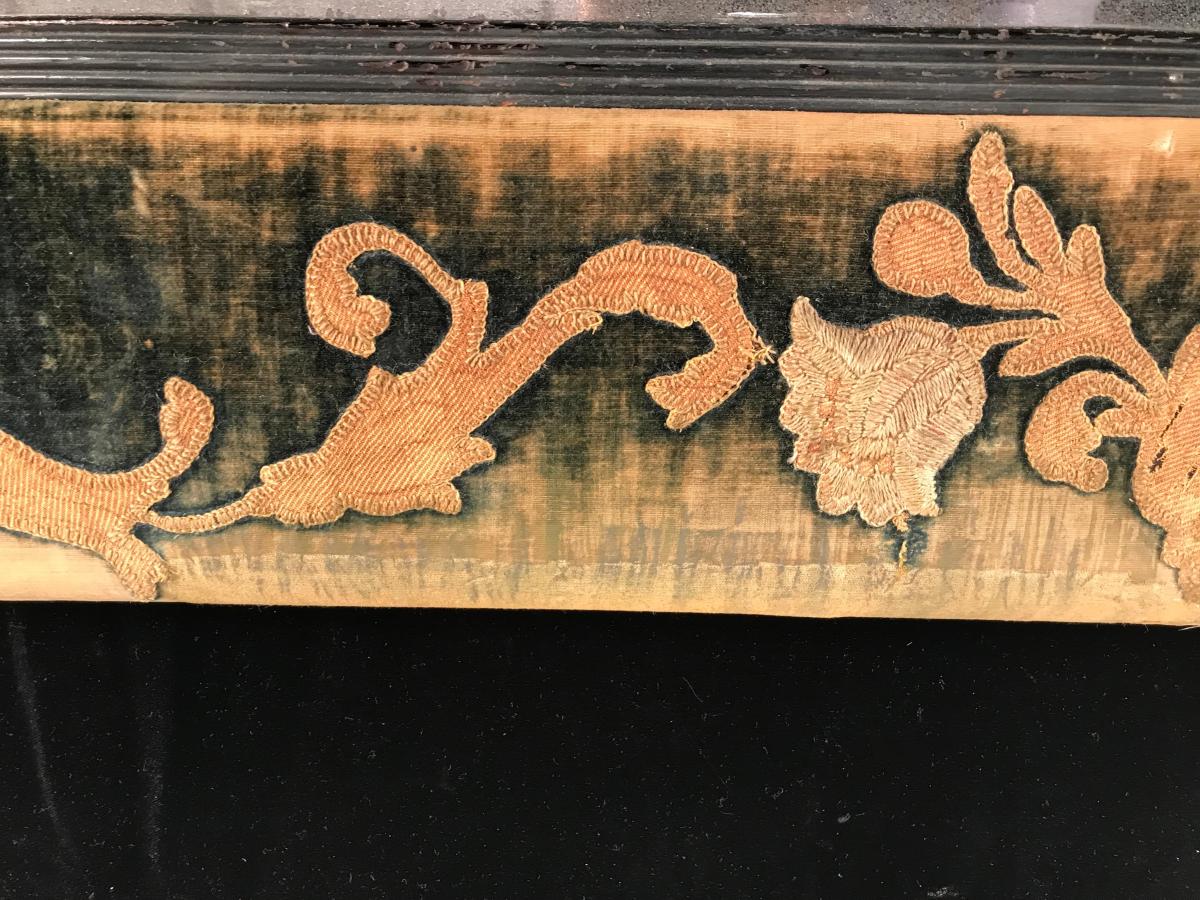
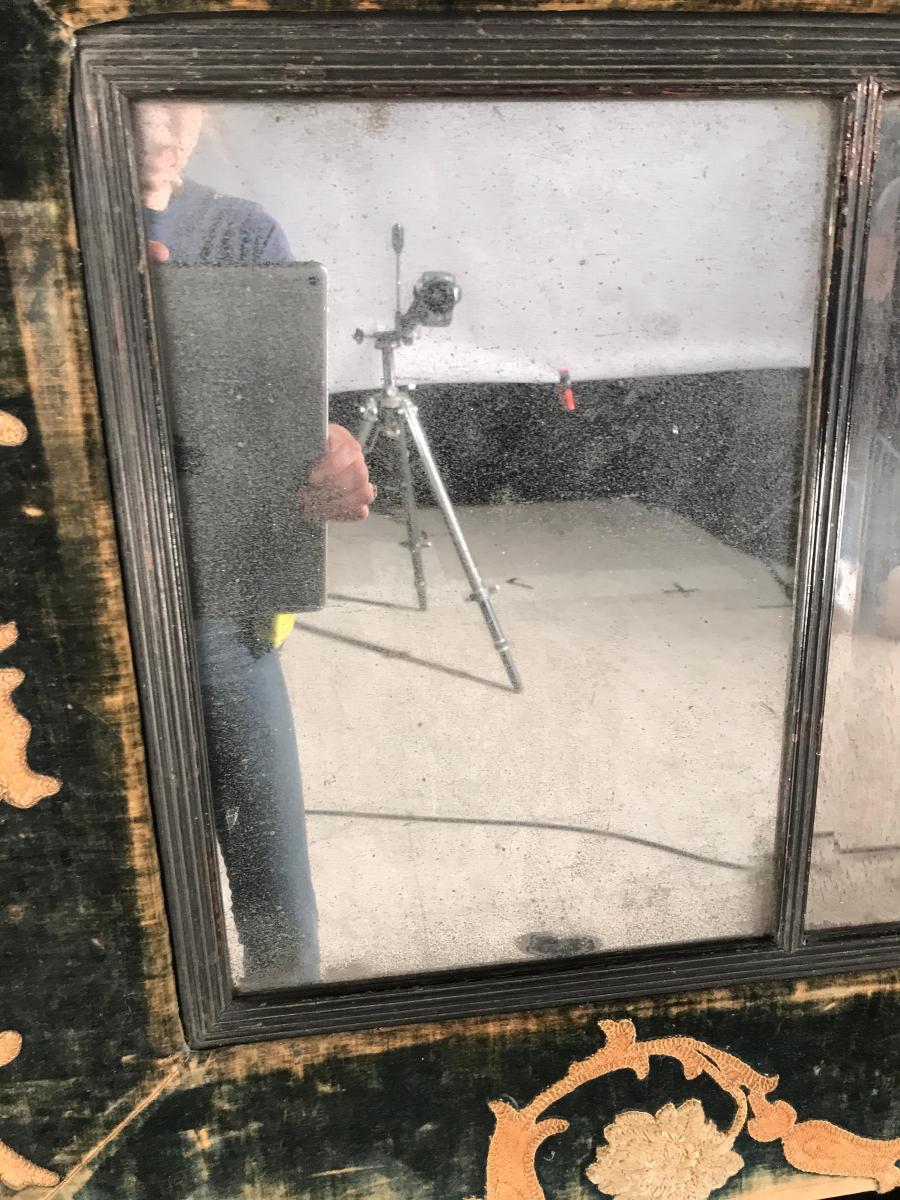
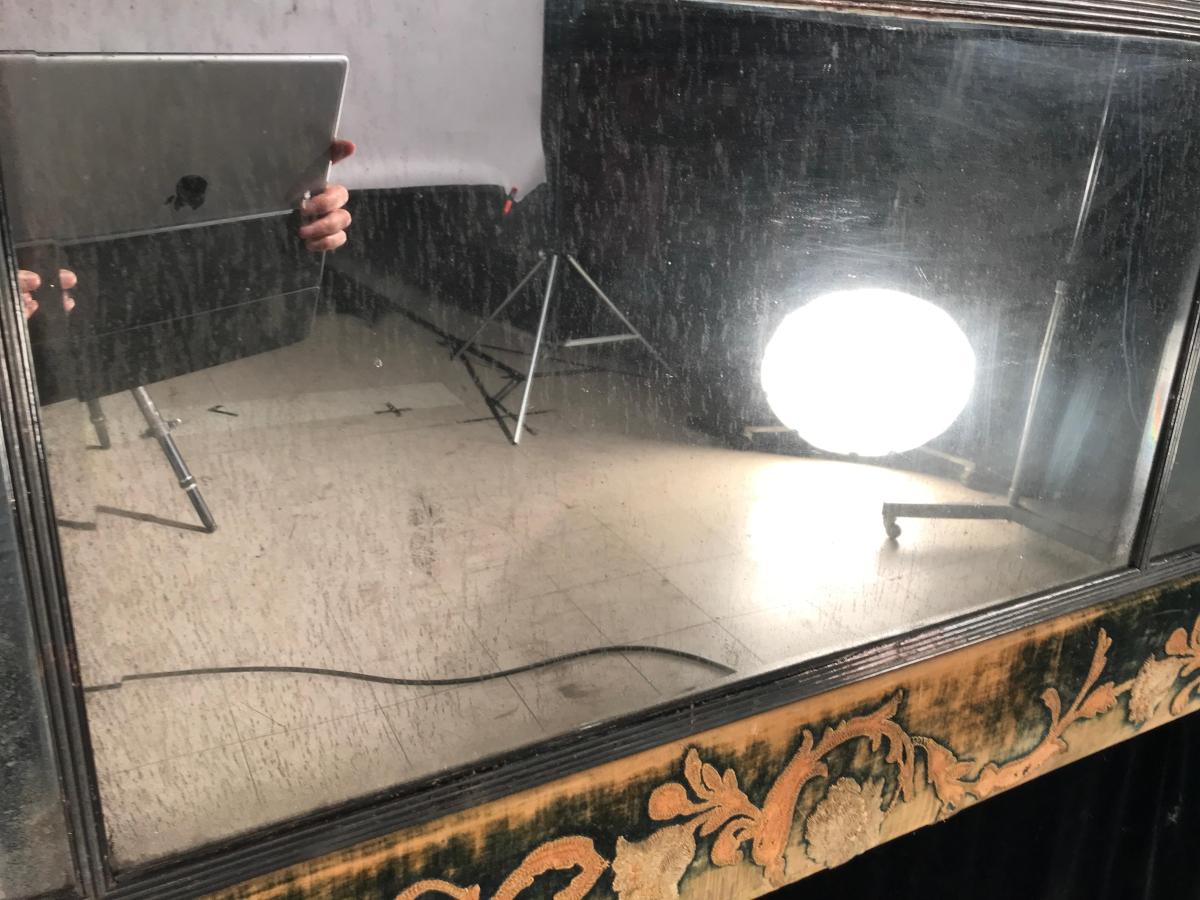
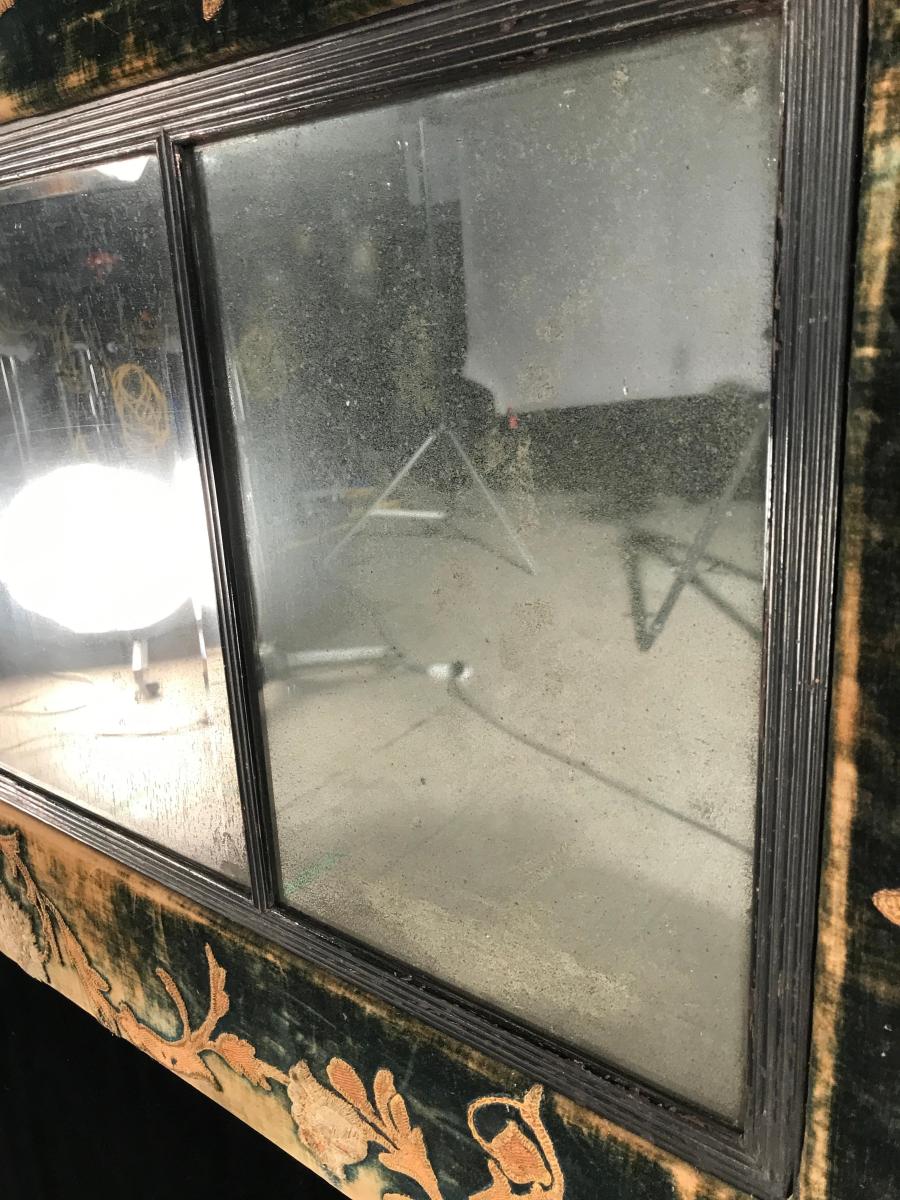
This object is eligible for a Certificate of BADA Provenance
The BADA Standard
- Since 1918, BADA has been the leading association for the antiques and fine art trade
- Members are elected for their knowledge, integrity and quality of stock
- Our clients are protected by BADA’s code of conduct
- Our dealers’ membership is reviewed and renewed annually
- Bada.org is a non-profit site: clients deal directly with members and they pay no hidden fees
18th Century Green Velvet and Crewelwork Mirror.
Dates: 1740.
Dimensions:
71.00cm high (27.95 inches high).
156.00cm wide (61.42 inches wide).
3.00cm deep (1.18 inches deep).
Description / Expertise:
A rare, green velvet and crewelwork, 18th century, vernacular. chimney glass/dressing glass.
• Rare example of a velvet and embroidered chimney glass which was almost certainly used in a bedroom or dressing room probably worked by the lady of the house.
• Characterful naïve charm, the patina of time has created softness in the textiles and the mirror plates.
• From Morville Hall, Shropshire, National Trust.
The frame upholstered green velvet with applied trailing stems of a repeat design of wool embroidered acanthus leaves with peonies and tulips The three bevelled plates faced with ebonised reeded moulding. Early 18th century.
Measures: 71cm high x 156cm wide x 3cm deep.
Condition report : the velvet are is faded and worn and the mirror plates are foxed all from environmental conditions over time. Conserved and stablilised, replaced back.
From the early to mid-17th century inventories record looking-glass frames in every medium, carved and gilt wood, metal, needlework, velvet, ivory and ebony. Among the rarest and most delicate looking-glasses were those in needlework frames. Most needlework looking-glasses were relatively small and probably served as dressing glasses often worked on by the ladies in the house. Prior to 1700, looking-glass plates were almost invariably rectangular, and sometimes bevelled or ‘diamond-cut’, sometimes not. They were generally rather small; the inventory of Edward Traherne, a prominent cabinet-maker and supplier of looking-glasses who died in 1674, lists over 100 unframed plates between 12 and 34 inches.
Another introduction of the 1690s was the ‘chimney-glass’, a forerunner of the modern overmantel mirror. This was a French innovation, first appearing in designs published in Paris in the early 1680s.44 The first English examples are associated with the new wave of French-inspired designs introduced after the accession of William and Mary in 1689. A pair of mirrors installed in the Queen’s Gallery at Kensington Palace in 1691 established what was to become a typical English form, being composed of three plates, the central one wider than the other two. From 1700, chimney-glasses could be found in many high-status houses, particularly those of prominent Francophiles and courtiers such as Ralph, 1st Duke of Montagu. When he died in 1709, many of the principal rooms at Boughton were fitted with ‘chimney glasses’, most being described as ‘in three parts’. At Dyrham Park, seat of William Blathwayt, Secretary of State to William III, there were chimney-glasses in most of the important rooms in 1710; significantly, none were there when a previous inventory had been taken in 1703.
The rectangular, three-plate design was the most common and continued to be made throughout the 18th century, partly because of their appealing symmetry, but primarily because it was cheaper to produce three small plates than one large one. In many cases, old plates were re-used in more up-to-date frames, retaining the three-plate format. Probate inventories reveal that by the 1720s chimney-glasses were common in the houses of prosperous tradesmen, merchants and professionals – in London and other cities.
Medium: Velvet.
Origin: United Kingdom.
Condition: Good.
The BADA Standard
- Since 1918, BADA has been the leading association for the antiques and fine art trade
- Members are elected for their knowledge, integrity and quality of stock
- Our clients are protected by BADA’s code of conduct
- Our dealers’ membership is reviewed and renewed annually
- Bada.org is a non-profit site: clients deal directly with members and they pay no hidden fees


